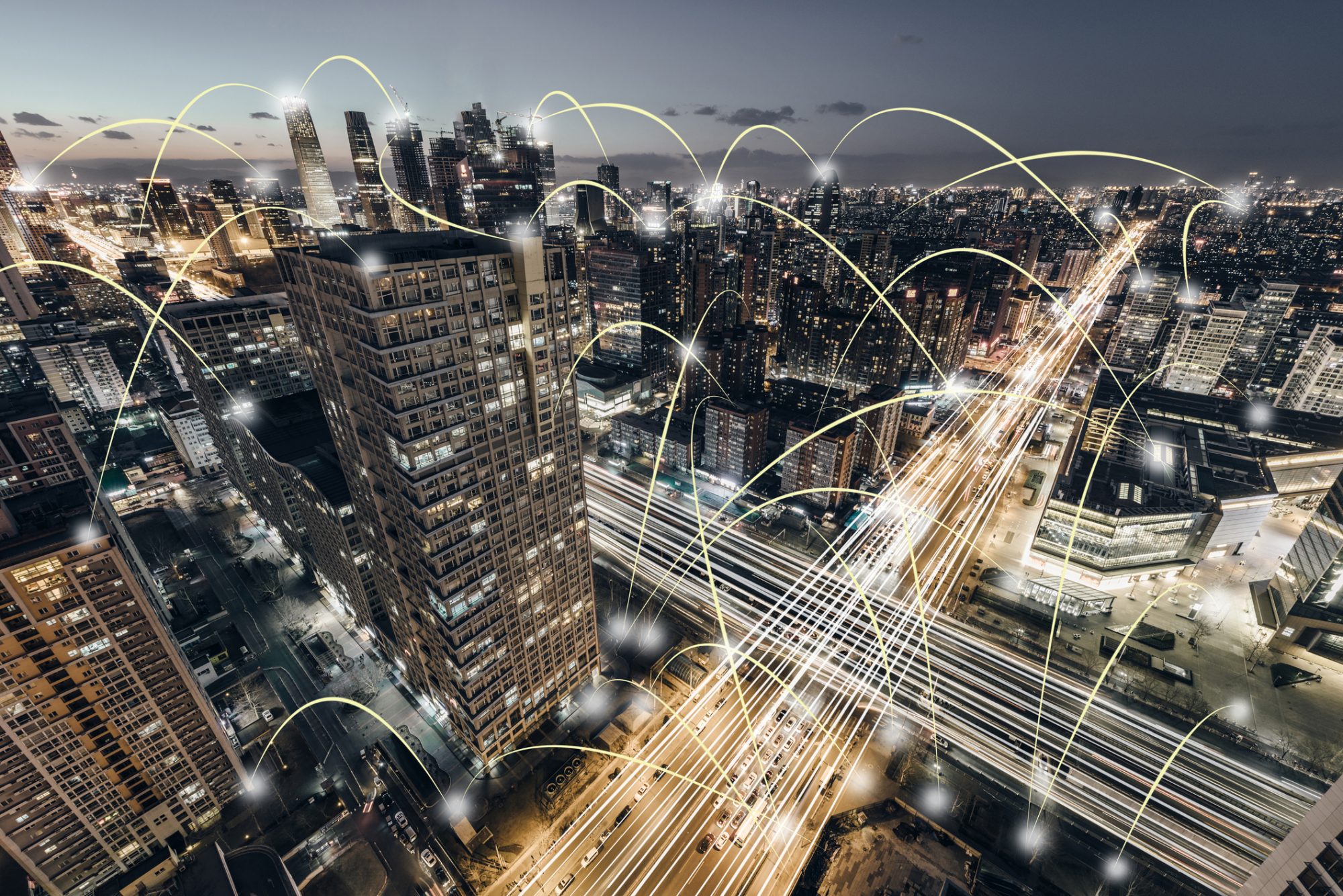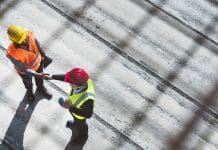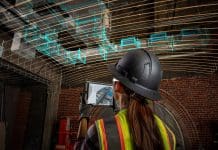IoT technology in construction will be a gamechanger for the industry, but challenges must be overcome first, says Ramona Marfievici, principal IoT engineer at Digital Catapult
The Internet of things (IoT) is transforming industries, enabling devices and equipment to interconnect and communicate data. This is now being applied to revolutionise building management and construction, and at Digital Catapult we are continuing to explore how this technology could be leveraged to support businesses within this sector.
IoT allows sensors, devices, machinery and assets to be embedded with connectivity and intelligence, and this has several applications in the construction and building space.
Data, for example, can be seamlessly collected, analysed and shared to drive automation, enhance operations and uncover insights, revolutionising construction and building management.
Given that the building sector also encompasses crucial activities like design, planning, construction and maintenance of infrastructure and properties, IoT is set to optimise these through several applications.
I have no doubt that IoT will be a gamechanger for the construction and building industry, but only if they embrace the technology and the challenges posed by its deployment are solved.
Smart building design and planning with IoT integration
One of the ways that the IoT is transforming building design and planning is through smart connected technologies.
Architects can now create intelligent building plans with integrated sensors, controls and automation systems built directly into the designs. Simulations of predicted usage patterns based on occupancy data then allow buildings to be optimised for efficiency even before construction begins.
Digital twin technology takes this even further by creating virtual models of buildings that are linked in real-time to the physical structures. This enables designers to simulate real-world performance to refine design and enable smart plumbing to create highly efficient smart infrastructures.
The potential for digital twin technology to solve industrial challenges and improve efficiency is in part why Digital Catapult will soon be launching a digital twin centre in Northern Ireland.
The centre will explore further use cases of the technology, and the value of combining immersive and IoT technology, as the number of digital twins of buildings is set to increase. IoT will undoubtedly enable the construction of truly intelligent buildings that can self-regulate, diagnose issues, optimise energy use and maintain a healthy environment.
Enhancing productivity and safety in construction
Another way that IoT will benefit construction and building management is by improving safety. During the construction process, automated drones can survey and geospatially map construction sites for accurate planning and progress tracking.
Equipment, tools, vehicles and materials are tagged with sensors to monitor real-time usage, improve coordination and optimise supply chains. IoT devices also facilitate remote monitoring and controls of sites, improving safety and work zone monitoring. Smart inventory management integrates supply chain logistics by tracking materials and assets across the construction workflow.
Overall, IoT allows for greater transparency, automation, safety and integration during construction through always-connected technologies that provide a wealth of data to enhance productivity and quality.
Leveraging IoT technology in construction to meet sustainability objectives
IoT can also help construction companies to meet their sustainability objectives by monitoring energy performance and minimising waste. Self-diagnosing building systems can, for example, identify issues early and enable smoother operations.
This means that overall building management is enhanced, with the ability to monitor energy performance against efficiency targets and work towards net zero goals.
IoT creates smart, connected buildings that can understand and automatically respond to the needs of occupants, while optimising for sustainability, helping businesses to simultaneously meet their sustainability objectives and improve efficiency using this technology.
At Digital Catapult, we continue to support businesses across industries as they attempt to meet their sustainability objectives.
On our Made Smarter Industry Sustainability Accelerator (MSISA), we are helping companies to adopt solutions that will deliver resource efficiency and energy efficiency (REEE), with emerging technologies including IoT, as the technology continues to prove its value in helping business leaders to meet their environmental goals.
IoT-enabled automation and maintenance
The IoT presents game-changing opportunities to enhance maintenance and operations of buildings too. IoT-enabled building automation can also adjust heating, ventilation and air conditioning (HVAC), lighting and security systems in real-time based on occupancy and usage data for maximum efficiency.
This provides substantial energy savings, along with transitioning maintenance to predictive mode instead of reactive. Monitoring utilisation enables the creation of flexible spaces and work schedules, increasing productivity and improving resource allocation.
IoT enables predictive maintenance, which reduces costly downtime compared with reactive approaches. Smart systems can be monitored and controlled remotely, and automated alerts and service requests can be triggered by IoT devices to enable proactive issue resolution and upgrades.
Rich analytics of machine and building data identifies opportunities to improve performance and energy efficiency, demonstrating how IoT introduces more proactive, data-driven and automated approaches to maintain and operate intelligent buildings and infrastructures.
Facilities management is transformed from time-based to condition-based, with smart connected technologies enabling diagnostics, predictive analytics and prescriptive recommendations. It’s clear to see how IoT technology in construction can and will benefit many companies, but challenges with the technology must be solved, too.
Overcoming challenges with IoT technology in construction
While the IoT presents tremendous potential, there are also notable challenges to address. A key issue is interoperability between different vendor platforms and systems, which remains limited. This can introduce complexities in integrating diverse solutions.
Additionally, increased connectivity and data collection raise valid cybersecurity and privacy concerns that must be tackled proactively. The shift requires upfront investment in sensors, connectivity, analytics and skills. Companies will need to assess challenges carefully and mitigate risks to successfully leverage IoT’s benefits, and this is where organisations like Digital Catapult play a vital role.
At Digital Catapult, we are hosting a series of Connected Ecosystems events to foster learning and knowledge-sharing within the IoT space and to solve some of these pressing challenges, showcasing promising solutions and bringing together leading experts. A holistic approach covering technology, processes, people and partnerships can enable construction players to smoothly transition towards more connected, transparent and optimised ways of building.
The adoption of IoT technology in construction brings several transformational shifts to building design and operations. IoT enables smarter building design with embedded sensors and controls, as well as digital twin modelling for virtual optimisation.
Construction sites benefit from automated tracking of progress, safety, quality, equipment and materials, and the operation of buildings and infrastructure is enhanced through intelligent, self-regulating systems with predictive capabilities. Lastly, IoT unlocks superior maintenance capabilities through remote monitoring, control and actionable analytics.
The connectivity and data-driven insights introduced by IoT sensors and platforms fundamentally upgrades how buildings are conceived, constructed and managed to be more efficient, agile and sustainable, demonstrating the value of this technology for the sector. Any company interested in learning more about Digital Catapult’s IoT work should read more here.
Ramona Marfievici
Principal IoT engineer
Digital Catapult

















